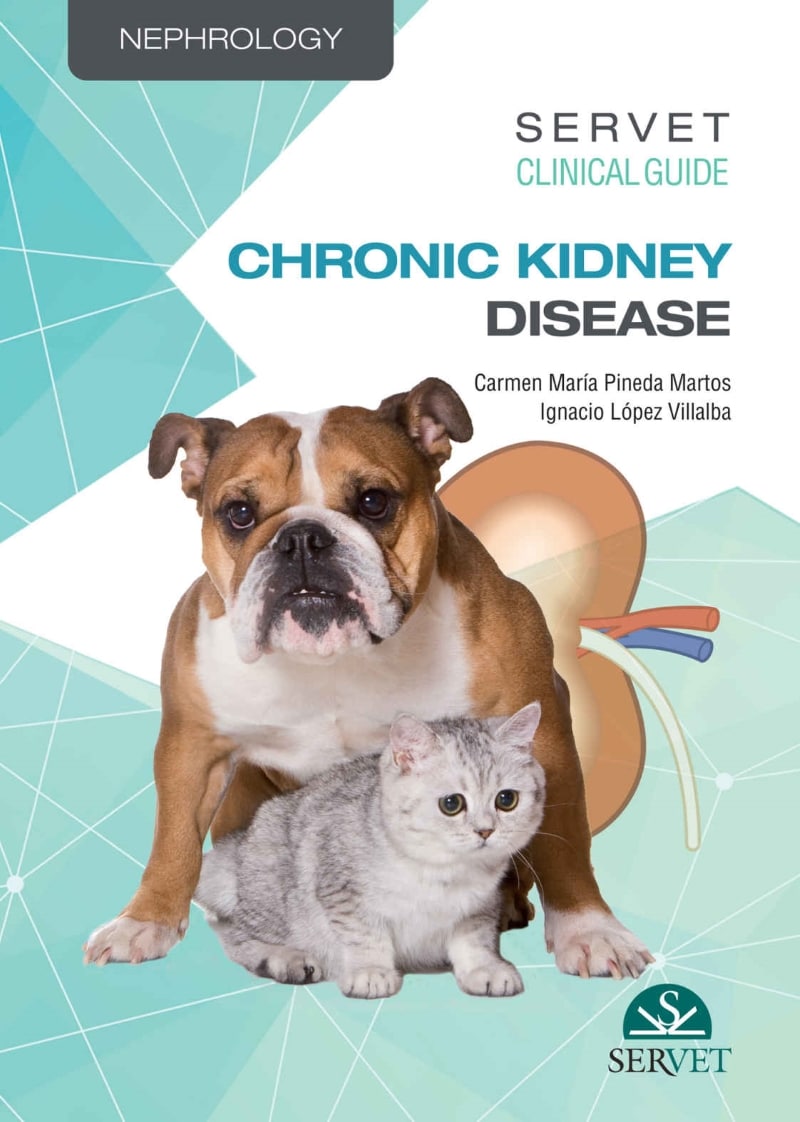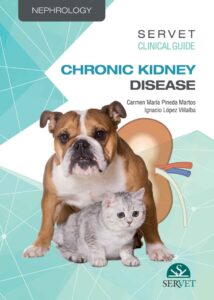Table of Contents:
1. Visit the clinic
- What is chronic kidney disease?
- What is the first sign that the owner observes?
- Anamnesis to guide the diagnosis
- Risk factors
- Differential clinical signs
- Clinical examination protocol
- Points to which particular attention should be paid
2. Diagnostic protocols
- Identifying the primary disease
- Most common laboratory alterations
- Haematology
- Blood biochemical analysis
- Urinalysis
- Acid–base and electrolyte analyses
- Blood pressure measurement
- Useful diagnostic imaging tests
- Radiography
- Ultrasound
- Computed tomography
- Magnetic resonance imaging
- Scintigraphy
- Specialised diagnostic tests
- Estimation of glomerular filtration rate
- New markers of renal function
- How to manage phosphocalcic metabolism
- disorders
- Renal biopsy
- Staging and diagnostic criteria for CKD
3. Communication with the pet owner
- How to inform the owner
- Can an animal with CKD be cured?
- Can disease progression be predicted?
- CKD prognosis
- How long can an animal live with CKD?
- What factors influence survival time?
- Guidelines to follow once diagnosis is established
4. Treatment protocols
- Medical treatment of the patient
- Dietary modification as a fundamental pillar of treatment
- Correction of dehydration and management of acid–base and electrolyte alterations
- Treatment of gastrointestinal signs
- Treatment of anaemia
- Treatment of hyperphosphataemia
- Treatment of hypertension
- Treatment of proteinuria
- Other treatments
- Calcitriol
- Mesenchymal stem cell therapy
- Probiotics
- Calcimimetics
- Control of uraemic crisis in cases of exacerbation of CKD
- Use of replacement therapies
- 5. Guidelines for the owner: follow-up
- Owner involvement, a key element in the management of CKD
- What signs should be monitored once diagnosis is established?
- How often should periodic check-ups be performed?
- How often should a patient with CKD visit the veterinary clinic?
- What should we do when the disease progresses to terminal stages?
6. Appendix
- Suggested treatment protocols according to IRIS CKD stage
- Recommended reading















![Ettinger’s Textbook of Veterinary Internal Medicine 9th Edition [PDF+Videos] Ettinger’s Textbook of Veterinary Internal Medicine 9th Edition [True PDF+Videos]](https://www.vet-ebooks.com/wp-content/uploads/2024/10/ettingers-textbook-of-veterinary-internal-medicine-9th-edition-100x70.jpg)
![Textbook of Veterinary Diagnostic Radiology 8th Edition [PDF+Videos+Quizzes] Thrall’s Textbook of Veterinary Diagnostic Radiology, 8th edition PDF](https://www.vet-ebooks.com/wp-content/uploads/2019/09/textbook-of-veterinary-diagnostic-radiology-8th-edition-100x70.jpg)






